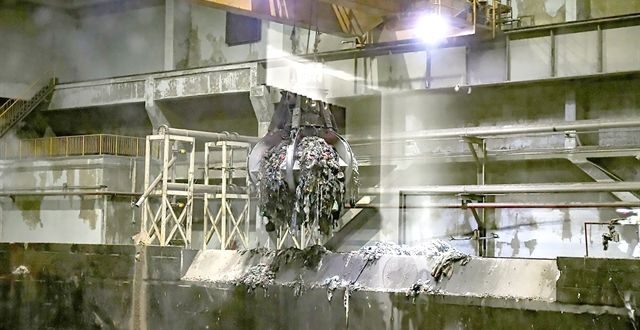HANOI: As landfill solutions become increasingly outdated, the development of waste-to-energy plants is expected to be the key answer to environmental problems.
Notably, waste-to-energy projects not only help to handle a large amount of waste but also provide a significant source of renewable energy.
The government has been reiterating the message of “not trading off the environment for economic growth” on many occasions, reflecting their consistent stance on environmental protection.
However, with the advent of waste-to-energy technology, the concepts of “environment and economy” can progress in tandem with no longer any need to trade off or sacrifice one for the other.
Vietnam is currently among the top 20 countries in the world with the largest amount of waste, exceeding the global averages, due to limited waste management and treatment facilities.
It is estimated that the average Vietnamese generates 1.2kg of waste per day (equivalent to nearly 70,000 tonnes across the whole country).
Currently, over 70% of waste in Vietnam simply ends up in landfill, with only 13% being incinerated to recover energy.
Notably, landfill sites are becoming increasingly difficult to source, as the land available for this purpose is gradually shrinking.
To cope with this acute and growing problem, the development of waste-to-energy plants is seen as not only economically beneficial, but also as providing a significant and positive contribution to the environment.
The combination of modern science and technology with environmentally-friendly waste treatment processes creates a comprehensive solution for waste issues and sustainable energy production.
This helps solve the pressing issue of increasing and growing mountains of waste and the worsening air and water pollution levels.
Thus, the development of waste-to-energy plants is seen as a dual-benefit solution, expected to be a strategic approach that ‘hits two targets with one arrow’ addressing both economic and environmental concerns simultaneously.
According to statistics from the Department of Environmental Pollution Control, Vietnam currently has 15 waste-to-energy plants under construction, with three of them already generating electricity including the largest, the Soc Son plant operated by the Hanoi Thien Y Environmental Energy Joint Stock Co.
This has a treatment capacity of 1,000 tonnes per furnace per day, receiving 5,000 tonnes of waste daily and generating 90 megawatts (MW) of electricity.
The Vinh Tan plant in Binh Thuan Province has a capacity of treating 600 tonnes of waste per day and generates 30MW of electricity.
The Phu Ninh plant in Phu Tho Province can incinerate 500 tonnes of waste per day and generate 25 MW of electricity, while the Cu Chi plant in Ho Chi Minh City can process 1,000 tonnes of waste per day and generate 50MW of electricity.
The Soc Son plant is the biggest waste-to-energy plant in Vietnam and the second largest in the world, after the Shenzhen plant in China.
The plant has 16 waste disposal gates, each designed to accommodate different types of rubbish trucks in Vietnam and since becoming operational it has processed over 1.46 million tonnes of household solid waste.
Waste incineration technology to generate electricity is increasingly favoured because of several advantages over other technologies, such as reducing waste volume and mass by 90% to 95%, utilising heat, reducing greenhouse gas emissions compared to landfill and minimising water pollution. — Viet Nam News/ANN
 BeritaKini.biz Berita Viral Terkini di Malaysia
BeritaKini.biz Berita Viral Terkini di Malaysia





